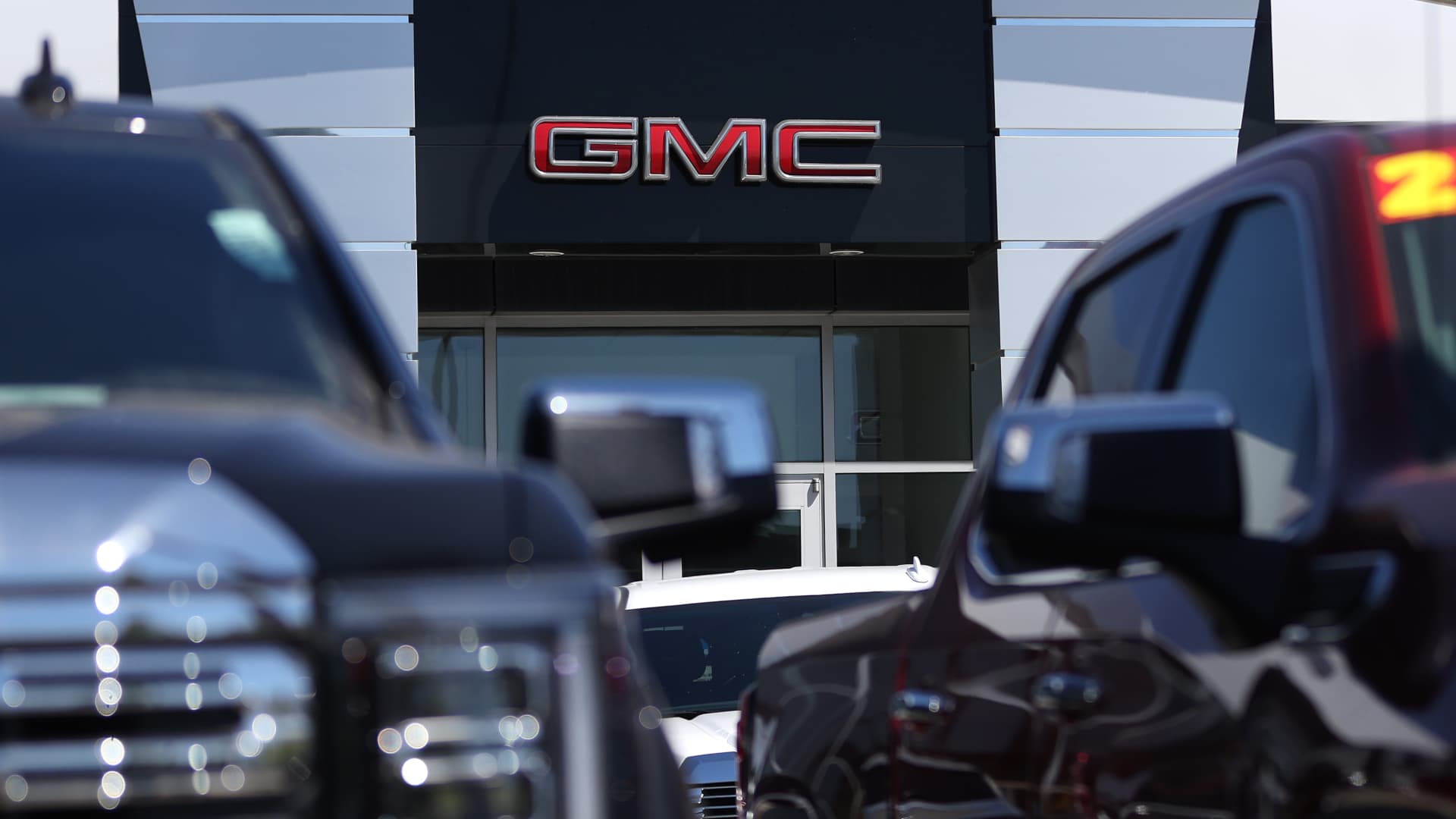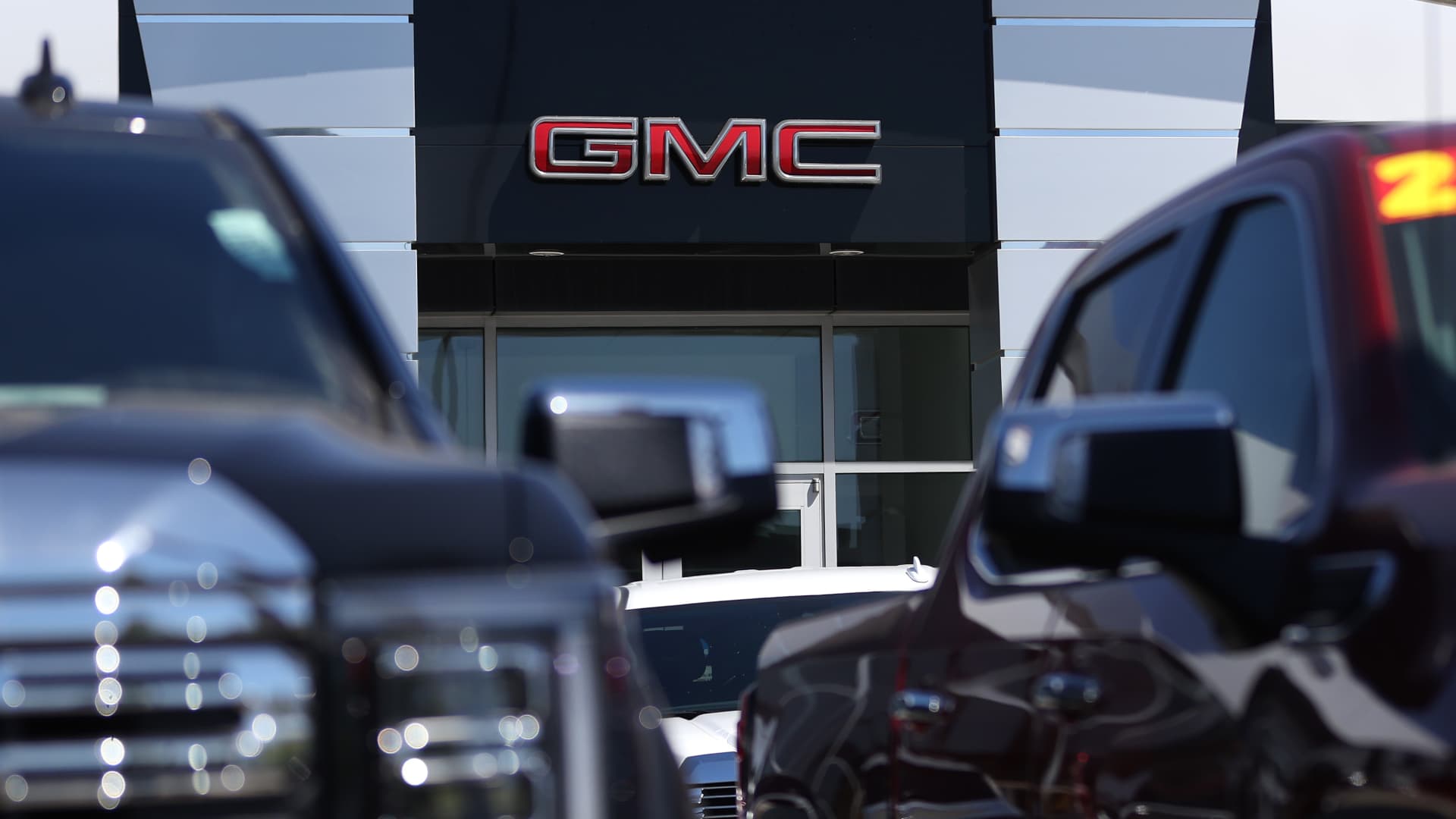General Motors Q2 2025 Earnings: Navigating a Shifting Landscape
Introduction: The Road Ahead
General Motors (GM) stands at a crossroads as it prepares to unveil its Q2 2025 earnings report. The automotive industry is undergoing a seismic shift, driven by technological advancements, evolving consumer preferences, and economic uncertainties. Investors and analysts are eagerly awaiting GM’s performance metrics, not just for the quarterly figures, but for insights into the company’s strategic direction and resilience in the face of these challenges. While analysts predict a year-over-year decline in revenue and earnings, the real story lies in GM’s ability to adapt and position itself for future growth.
Wall Street Expectations: A Mixed Bag
Analysts have set the stage for a mixed performance from GM in Q2 2025. The consensus earnings per share (EPS) estimate stands at $2.41, while revenue expectations hover around $43.05 billion. These figures represent a decline compared to the previous year, reflecting the cautious outlook among analysts. Factors such as increased competition, supply chain dynamics, and potential softening in consumer demand contribute to this cautious sentiment. However, it’s important to note that GM has a history of exceeding revenue expectations, which adds an element of uncertainty to the current forecasts. The market will be closely watching whether GM can defy these expectations or if the cautious outlook proves accurate.
Key Areas to Watch: Deciphering the Details
Beyond the headline numbers, several key areas will significantly influence investors’ perception of GM’s Q2 performance. These areas provide a deeper understanding of the company’s operational efficiency, strategic initiatives, and market positioning.
Electric Vehicle (EV) Strategy: Accelerating the Transition
GM’s commitment to electric vehicles is central to its long-term growth strategy. The Q2 report will offer valuable insights into the progress of its EV initiatives, which are crucial for the company’s future.
Production and Deliveries
Investors will scrutinize the production and delivery numbers of GM’s EV models, such as the Cadillac LYRIQ, Hummer EV, and Chevrolet Bolt EV. These figures will indicate the company’s ability to scale up EV production and meet growing demand. Strong delivery numbers would signal robust consumer interest and effective supply chain management, while weak numbers could raise concerns about production bottlenecks or market saturation.
Battery Technology
Advancements in battery technology are critical for improving EV range, performance, and cost. The report should shed light on GM’s progress in developing and sourcing advanced battery solutions, including its Ultium battery platform. Investors will be interested in any updates on battery innovation, as this is a key differentiator in the competitive EV market.
Charging Infrastructure
The availability of reliable charging infrastructure is a key factor in EV adoption. Investors will be interested in GM’s efforts to expand charging infrastructure, both through partnerships and its own initiatives. Updates on the expansion of the Ultium Charge 360 network and collaborations with charging providers will be closely watched.
Retail Sales Performance: Gauging Consumer Demand
Retail sales figures provide a direct measure of consumer demand for GM’s vehicles. Key metrics to watch include:
Sales Volume
Overall sales volume, broken down by vehicle segment and geographic region, will indicate the strength of consumer demand for GM’s product lineup. Strong sales figures would signal sustained consumer interest, while weak sales could raise concerns about demand headwinds.
Market Share
Changes in market share will reflect GM’s competitive position relative to other automakers. Investors will be looking for signs of growth or erosion in GM’s market share, which could indicate the company’s ability to compete effectively in the market.
Incentive Spending
The level of incentive spending (discounts and rebates) will provide insights into the pricing environment and the need to stimulate demand. High incentive spending could indicate pricing pressure or weak consumer demand, while low spending would suggest strong demand and pricing power.
Financial Health: Maintaining a Solid Foundation
A healthy financial position is essential for GM to invest in future growth initiatives and weather potential economic downturns. Key financial metrics to monitor include:
Revenue and Profit Margins
These metrics will indicate GM’s ability to generate revenue and profitability from its operations. Investors will be looking for signs of margin expansion or contraction, which could signal operational efficiency or cost pressures.
Cash Flow
Strong cash flow provides the company with the flexibility to invest in R&D, acquisitions, and shareholder returns. Investors will be watching for any changes in cash flow trends, as this is a critical indicator of financial health.
Debt Levels
Monitoring debt levels is crucial to assess GM’s financial risk and ability to meet its obligations. Investors will be looking for signs of debt reduction or increased leverage, which could impact the company’s financial stability.
Guidance for the Future: Setting the Course
GM’s guidance for the remainder of 2025 will provide valuable insights into the company’s expectations for the future. This guidance will likely cover:
Revenue and Earnings Projections
These projections will indicate GM’s outlook for its financial performance in the coming quarters. Investors will be looking for signs of optimism or caution in the guidance, which could signal the company’s confidence in its strategic initiatives.
Capital Expenditure Plans
Information on planned capital expenditures will reveal GM’s investment priorities, such as EV development and manufacturing capacity. Investors will be interested in the company’s commitment to future growth initiatives and the allocation of resources.
Strategic Initiatives
Updates on key strategic initiatives, such as partnerships and new product launches, will provide insights into GM’s long-term vision. Investors will be looking for signs of innovation and differentiation, which could drive future growth.
Potential Challenges: Navigating the Headwinds
While GM has made significant progress in its transformation, the company faces several potential challenges that could impact its Q2 performance and future outlook.
Supply Chain Disruptions: Overcoming the Obstacles
The automotive industry has been grappling with supply chain disruptions in recent years, particularly shortages of semiconductors and other critical components. These disruptions can impact production volumes, increase costs, and delay vehicle deliveries. Investors will be keen to hear about GM’s strategies for mitigating supply chain risks and ensuring a stable supply of components.
Inflationary Pressures: Managing Costs
Rising inflation is putting pressure on automakers’ costs, including raw materials, labor, and transportation. GM will need to effectively manage these cost pressures to maintain its profitability. The company’s ability to pass on some of these costs to consumers through higher prices will also be a key factor.
Competition: Staying Ahead of the Curve
The automotive industry is becoming increasingly competitive, with new entrants and established players vying for market share. GM will need to continue innovating and developing compelling products to differentiate itself from the competition. The rise of EV startups and the increasing focus on autonomous driving are adding to the competitive pressures.
Conclusion: Charting a Course for Success
As General Motors prepares to release its Q2 2025 earnings report, the spotlight is on the company’s ability to navigate a complex and evolving landscape. While analysts anticipate a potential decline in year-over-year performance, the true measure of GM’s success lies in its strategic initiatives, its progress in the EV market, and its ability to adapt to changing consumer preferences. By closely monitoring the key areas outlined in this report, investors can gain a deeper understanding of GM’s strengths, challenges, and future prospects. The Q2 earnings report will serve as a crucial roadmap, revealing whether GM is on track to achieve its long-term goals and maintain its position as a leader in the automotive industry. Ultimately, the road ahead for GM depends on its capacity to innovate, execute its strategy effectively, and navigate the ever-changing dynamics of the global automotive market. The numbers will tell a story, but the narrative woven around those numbers will determine investor confidence and GM’s long-term trajectory.












